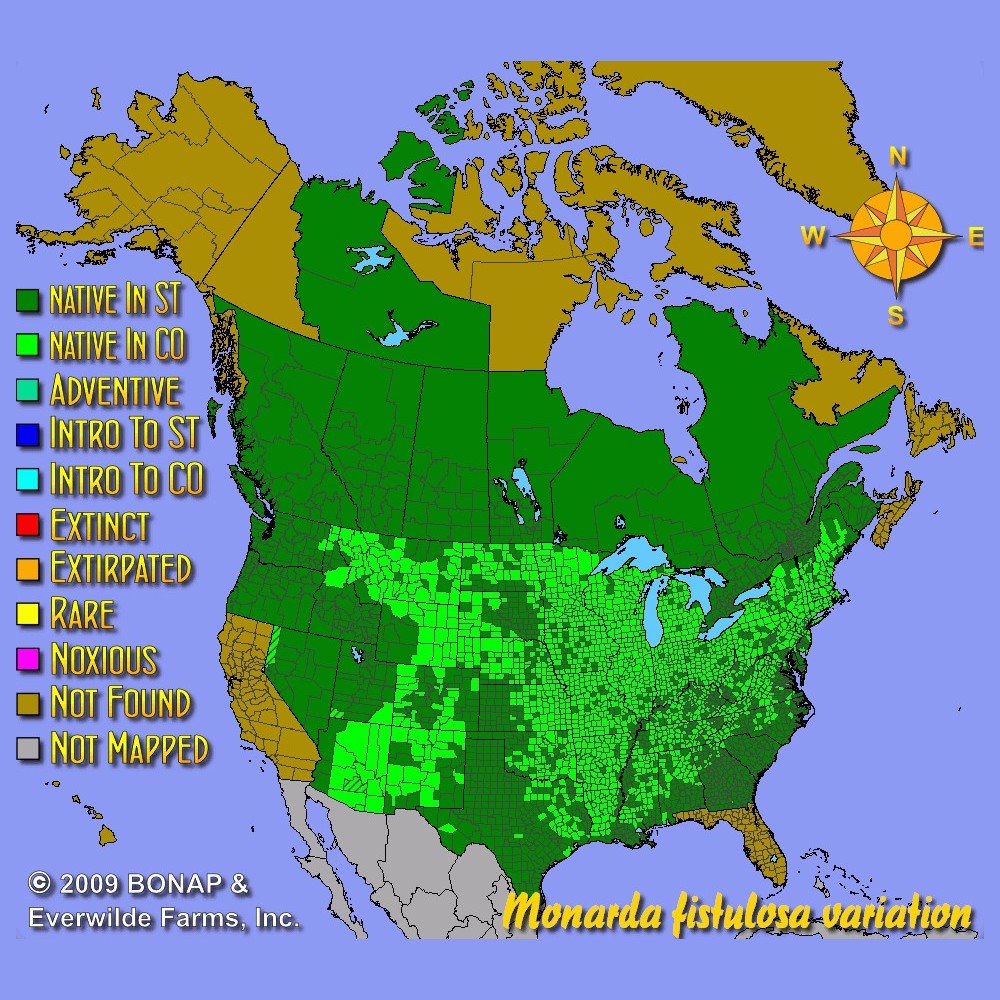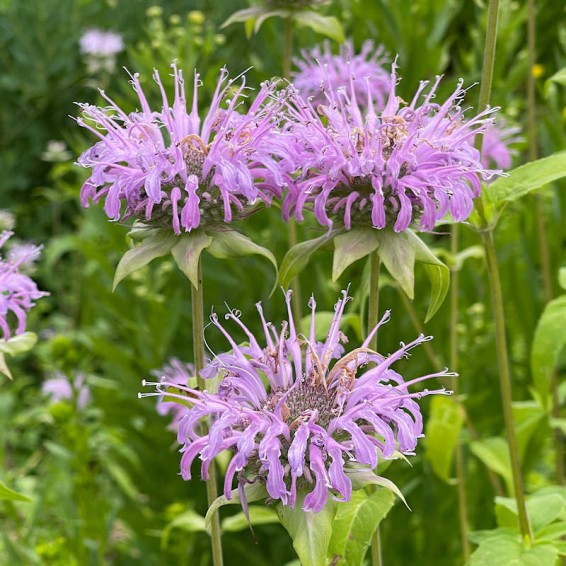Wahpe Washtemna Seeds
Monarda fistulosa variation
- HOW TO GROW
- FAST FACTS
HOW TO GROW
Sowing: Direct sow in early spring, pressing lightly into the surface of the soil. Keep the soil lightly moist until germination, which should occur within 10-20 days at temperatures from 60-70 degrees F. When the seedlings can safely be handled, thin or transplant for wider spacing. For an early start, start the seed indoors 6-8 weeks before the last frost and transplant outdoors.
Growing: Water young plants occasionally. Mature plants prefer well-drained soil and can tolerate drought well. Too much moisture or overcrowding can cause mildew or other fungal diseases. This plant may self-seed, and often spreads by rhizomes. These blossoms attract hummingbirds, bees, and butterflies. Deadhead for the most blooms. After 2-3 years, the plants can be divided.
Harvesting: For cut flowers, choose stems with flowers that have just opened. Strip the foliage that will fall below the water level, and place in water immediately.
Seed Saving: When the flower spikes begin to dry and turn brown, remove them and spread them out to dry; thresh them to remove the seed. Shaking the entire plant's seed heads into a container is also effective, but the process should be repeated daily until all the seed has matured. Store the seed in a cool, dry place.
FAST FACTS
Latin Name: Monarda fistulosa variation
Species Origin: US Native Wildflower
Type: Native Wildflowers
Life Cycle: Perennial
USDA Zones: 2, 3, 4, 5, 6, 7, 8, 9
US Regions: Mountain, Arid/Desert, Plains/Texas, Midwest, Northern, Northeast, Southeast
Seeds per Ounce: 71,500
Stratification: No Stratification
Germination Ease: No Stratification
Sunlight: Full Sun, Part Sun
Height: 48 Inches
Color: Pink, Purple
Bloom Season: Blooms Late Summer, Blooms Early Fall
Uses: Attracts Pollinators, Attracts Honeybees, Attracts Butterflies, Hummingbirds, Aromatic, Cut Flowers, Deer Resistant
DESCRIPTION

HOW TO GROW
Sowing: Direct sow in early spring, pressing lightly into the surface of the soil. Keep the soil lightly moist until germination, which should occur within 10-20 days at temperatures from 60-70 degrees F. When the seedlings can safely be handled, thin or transplant for wider spacing. For an early start, start the seed indoors 6-8 weeks before the last frost and transplant outdoors.
Growing: Water young plants occasionally. Mature plants prefer well-drained soil and can tolerate drought well. Too much moisture or overcrowding can cause mildew or other fungal diseases. This plant may self-seed, and often spreads by rhizomes. These blossoms attract hummingbirds, bees, and butterflies. Deadhead for the most blooms. After 2-3 years, the plants can be divided.
Harvesting: For cut flowers, choose stems with flowers that have just opened. Strip the foliage that will fall below the water level, and place in water immediately.
Seed Saving: When the flower spikes begin to dry and turn brown, remove them and spread them out to dry; thresh them to remove the seed. Shaking the entire plant's seed heads into a container is also effective, but the process should be repeated daily until all the seed has matured. Store the seed in a cool, dry place.
FAST FACTS
Latin Name: Monarda fistulosa variation
Species Origin: US Native Wildflower
Type: Native Wildflowers
Life Cycle: Perennial
USDA Zones: 2, 3, 4, 5, 6, 7, 8, 9
US Regions: Mountain, Arid/Desert, Plains/Texas, Midwest, Northern, Northeast, Southeast
Seeds per Ounce: 71,500
Stratification: No Stratification
Germination Ease: No Stratification
Sunlight: Full Sun, Part Sun
Height: 48 Inches
Color: Pink, Purple
Bloom Season: Blooms Late Summer, Blooms Early Fall
Uses: Attracts Pollinators, Attracts Honeybees, Attracts Butterflies, Hummingbirds, Aromatic, Cut Flowers, Deer Resistant




